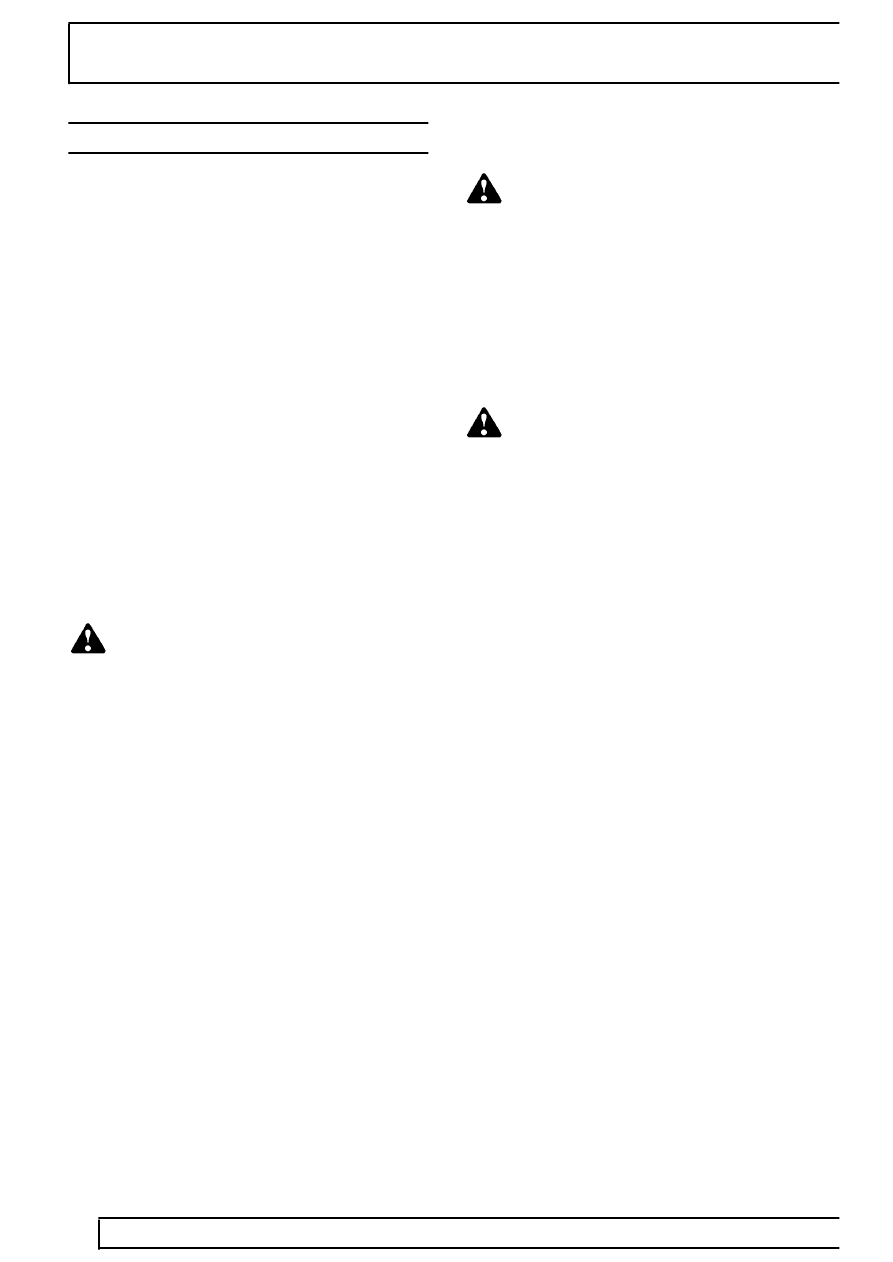Range Rover P38

01
INTRODUCTION
NEW RANGE ROVER
2
INFORMATION
FUEL HANDLING PRECAUTIONS
The following information provides basic precautions
which must be observed if fuel is to be handled safely.
It also outlines other potential risks which must not be
ignored.
This information is issued for basic guidance only; in
any case of doubt, seek advice from your local Fire
Officer or Fire Department.
Fuel vapour is highly flammable and in confined
spaces is also very explosive and toxic.
When fuel evaporates it produces 150 times its own
volume in vapour, which when diluted with air
becomes a readily ignitable mixture. The vapour is
heavier than air and will always fall to the lowest level.
It can readily be distributed throughout a workshop by
air currents, consequently, even a small spillage of
fuel is very dangerous.
Always have a fire extinguisher containing FOAM CO
2
GAS, or POWDER close at hand when handling fuel,
or when dismantling fuel systems and in areas where
fuel containers are stored.
WARNING: lt is imperative that the battery
is not disconnected during fuel system
repairs as arcing at the battery terminal
could ignite fuel vapour in the atmosphere.
Always disconnect the vehicle battery BEFORE
carrying out work on the fuel system.
Whenever fuel is being handled, transferred or
stored, or when fuel systems are being
dismantled, all forms of ignition must be
extinguished or removed, any leadlamps used
must be flame proof and kept clear of spillage.
No one should be permitted to repair components
associated with fuel without first having had fuel
system training.
Hot fuel handling precautions
WARNING: Before commencing any
operation requiring fuel to be drained from
the fuel tank, the following procedure must
be adhered to:
1. Allow sufficient time for the fuel to cool, thus
avoiding contact with hot fuels.
2. Vent the system by removing the fuel filler cap in
a well ventilated area. Refit the filler cap until the
commencement of fuel drainage.
Fuel transfer
WARNING: Fuel must not be extracted or
drained from any vehicle while it is
standing over a pit.
The transfer of fuel from the vehicle fuel tank must be
carried out in a well ventilated area. An approved
transfer tank must be used according to the transfer
tank manufacturer’s instructions and local regulations,
including attention to grounding of tanks.
Fuel tank removal
A FUEL VAPOUR warning label must be attached to
the fuel tank upon removal from the vehicle.
Fuel tank repair
Under no circumstances should a repair to any tank
be attempted.
